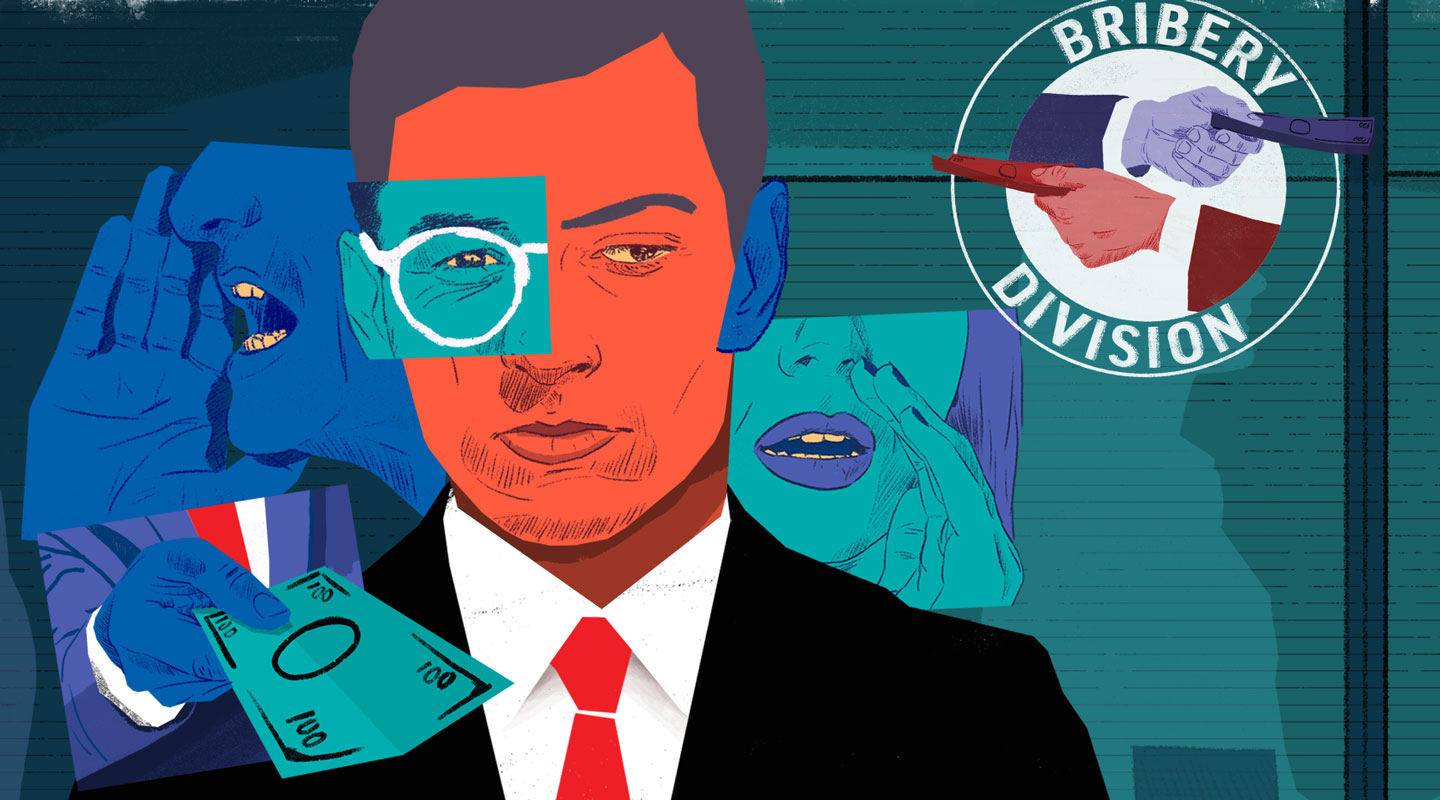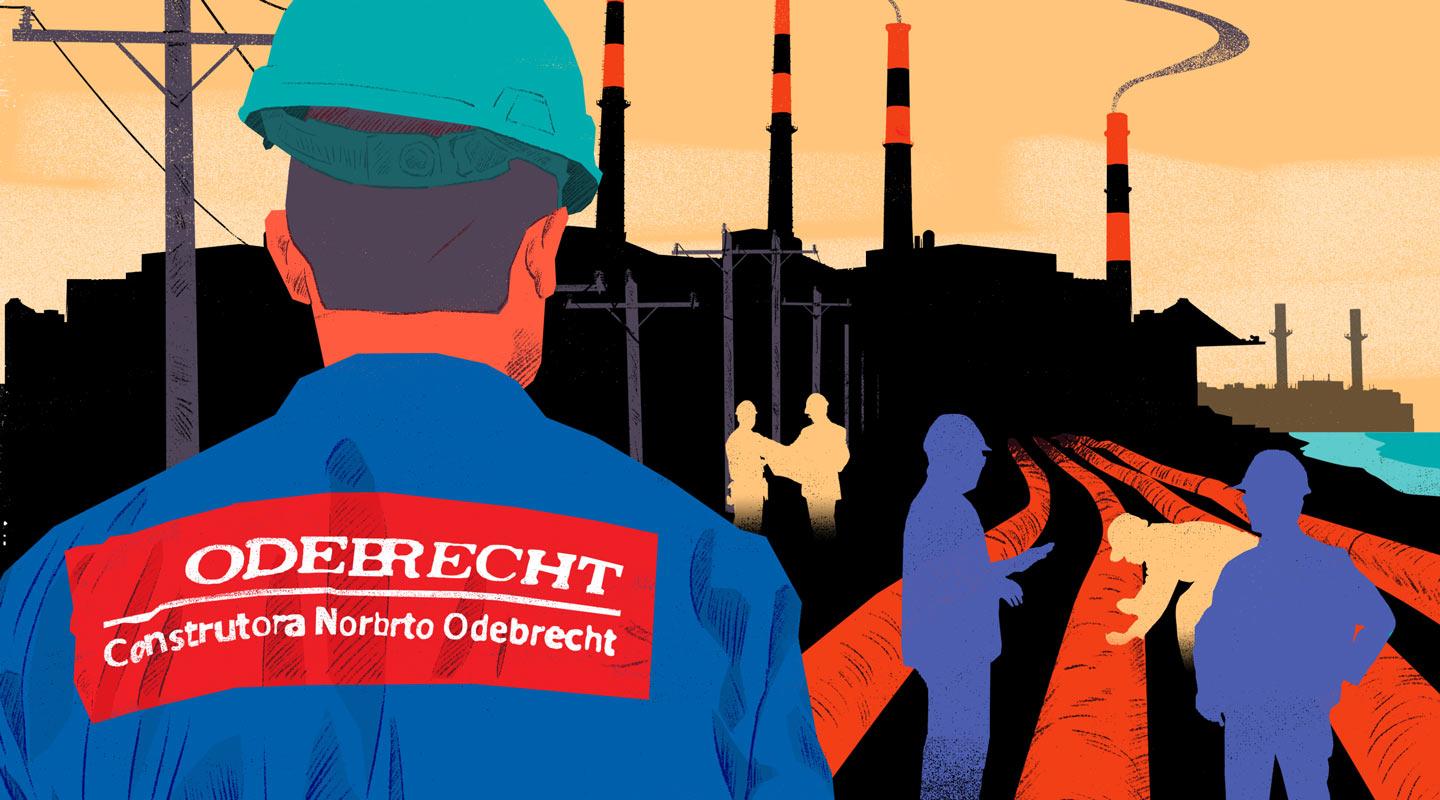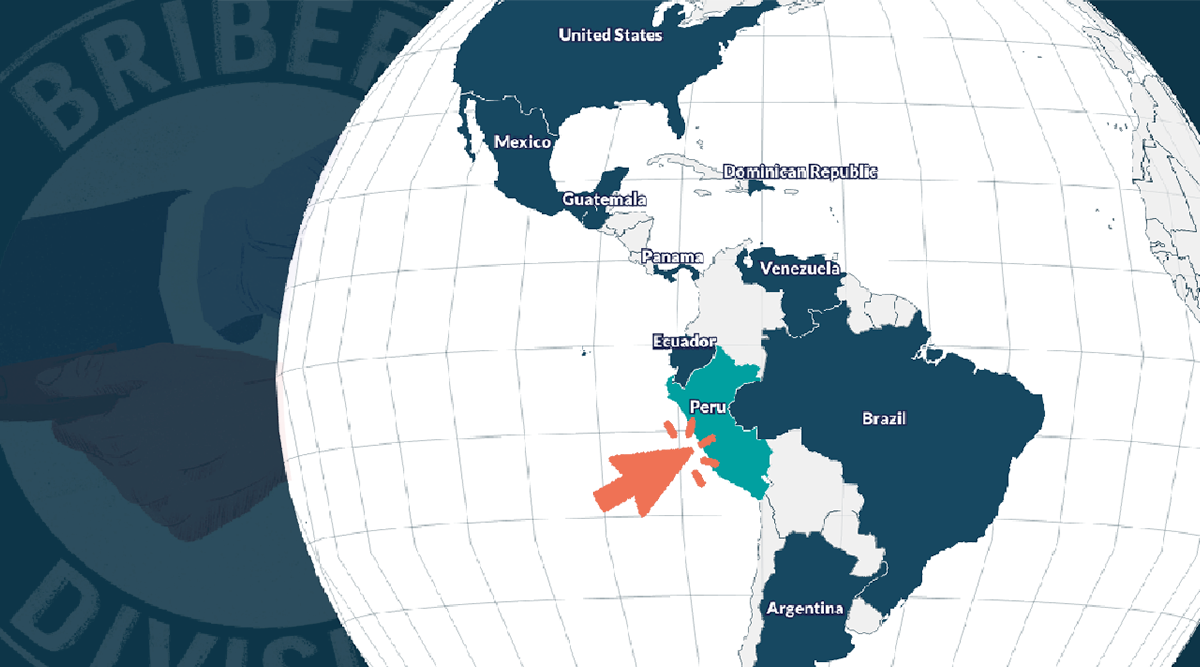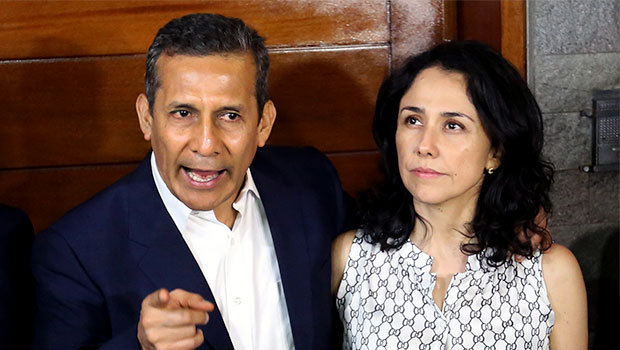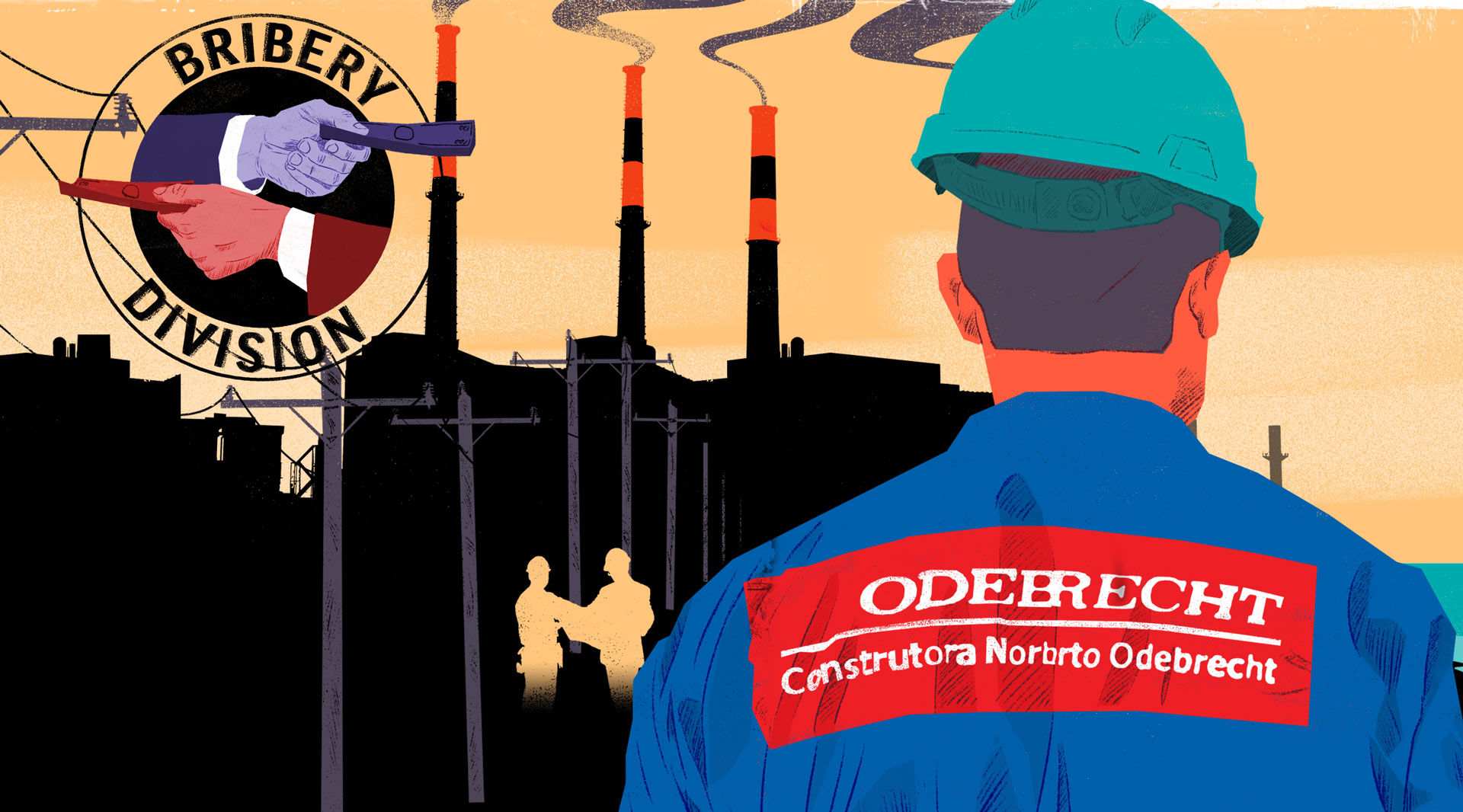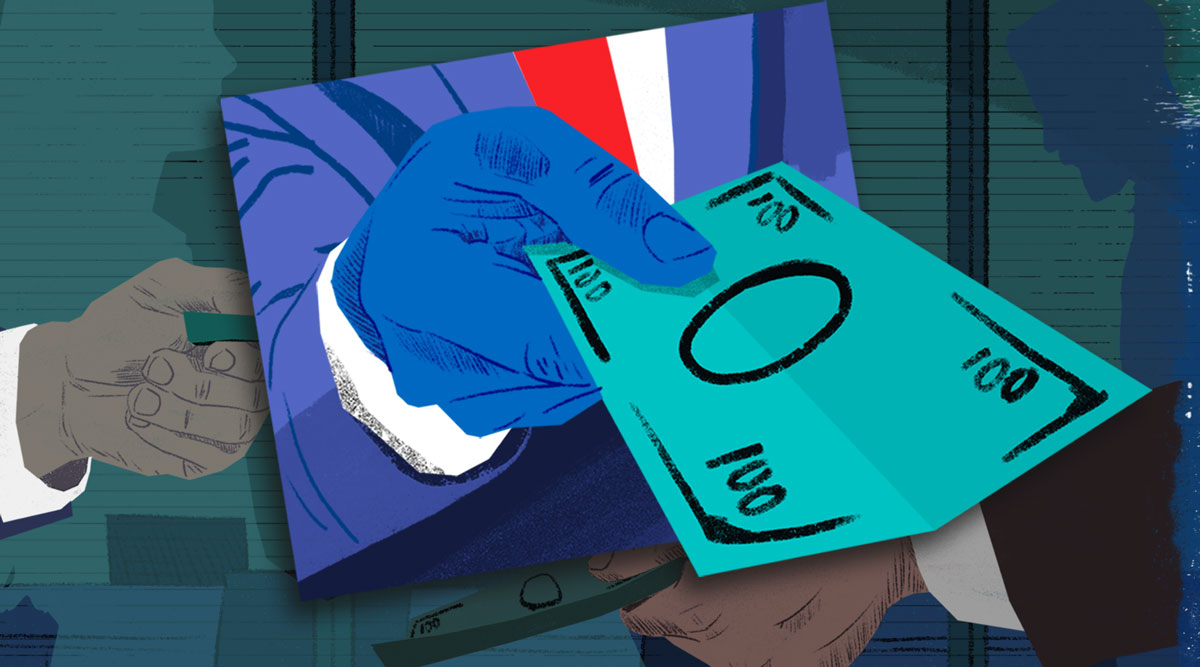The Bribery Division, an international investigation into Latin America’s largest construction company, reveals fresh evidence of hundreds of millions of dollars in suspicious payments linked to major infrastructure projects.
Brazilian multinational Odebrecht has been implicated in a cash-for-contracts scandal that the U.S. Department of Justice has described as “the largest foreign bribery case in history.”
The Bribery Division investigation takes you inside the belly of the beast: Odebrecht’s Division of Structured Operations, a specialized unit created for the primary purpose of managing the company’s graft.
The International Consortium of Investigative Journalists collaborated with more than 50 journalists across the Americas on this project.
Together, we examined more than 13,000 Odebrecht documents from a secret communication platform used by the Structured Operations unit. The materials were first leaked to La Posta in Ecuador.
In 2016, Odebrecht signed a plea deal with U.S., Brazilian and Swiss authorities, in which it confessed to corruption and paid $2.6 billion in fines in exchange for immunity or reduced penalties for the company and its executives.
Now, we have fresh evidence of corruption affecting large-scale projects in the Dominican Republic, Ecuador, Panama, Peru and Venezuela – projects not included in the plea deal or otherwise revealed publicly.
We tie more than $230 million in secret payments by Odebrecht to the construction of rapid-transit systems in Quito and Panama City, a coal-fired power plant in the Dominican Republic, a gas pipeline in Peru and other projects.
Hundreds of public officials have been investigated, and many of them have been charged, in connection with Odebrecht bribes.
In April, Peru’s two-time President Alan García killed himself after police arrived at his door with an arrest warrant related to the Odebrecht investigations.
Two more of Peru’s former presidents, Ollanta Humala and Pedro Pablo Kuczynski, and former Brazilian President Luiz Inácio Lula da Silva are under indictment or in jail because of Odebrecht-related inquiries.
From 2001 to 2016, the U.S. Department of Justice says, Odebrecht paid $788 million in bribes in connection with more than 100 projects.
The Bribery Division investigation exposes other major examples of suspicious Odebrecht payments across the region, which have not been addressed in criminal indictments or other disclosures by prosecutors.
These include more than $39 million in payments linked to the coal-fired power plant in the Dominican Republic, at least $3 million of which went to a company whose sole director was a prominent Dominican economist who helped approve the plant’s financial plan. The economist says the payment was for consultancy work.
Others linked to payments detailed in the leaked documents include a Salvadoran radio executive and a Peruvian politician who is under investigation because of an audio recording in which he appears to plot the assassination of his boss.
The thousands of documents come from Drousys, the system set up by the Division of Structured Operations to communicate about its secret payments.
Drousys was encrypted, and it identified Odebrecht employees and hundreds of illicit-payment recipients by code names such as “Gigo,” “Bambi” and “Waterloo,” many of which have yet to be cracked.
The construction giant paid off not just politicians but also other government officials, political parties and candidates, and bankers. The documents reveal secret payments funneled through a global network of offshore companies and bank accounts.
The payments indicate that Odebrecht’s bribery operation was even bigger than the company has publicly admitted. They show that numerous public works projects and public figures linked to its secret transactions have not been addressed by law enforcement, raising the question: Why?
ICIJ team
Director: Gerard Ryle
Project Manager: Fergus Shiel
Reporter: Sasha Chavkin
Data Editor: Emilia Díaz-Struck
Senior Editor: Dean Starkman
Consulting Editor: Tom Stites
Associate Editor and Fact Checker: Richard H.P. Sia
Copy Editor: Joe Hillhouse
Fact Checkers: Margot Williams and Delphine Reuter
Video Journalist: Scilla Alecci
Online Editor: Hamish Boland Rudder
Engagement Editor: Amy Wilson-Chapman
Data Developer: Miguel Fiandor Gutiérrez
Web Developer: Antonio Cucho
Editorial Intern: Zshekinah Collier
Illustrator: Ricardo Weibezahn
Reporters
- Hugo Alconada (Argentina)
- Emilia Delfino (Argentina)
- André de Souza (Brazil)
- Guilherme Amado (Brazil)
- Thiago Herdy (Brazil)
- Douglas Sousa (Brazil)
- Fernando Rodrigues (Brazil)
- Mateus Netzel (Brazil)
- Tiago Mali (Brazil)
- Alicia Ortega Hasbun (Dominican Republic)
- Yanina Estevez (Dominican Republic)
- Mónica Almeida (Ecuador)
- Paúl Mena Mena (Ecuador)
- Christian Zurita (Ecuador)
- Martha Roldos (Ecuador)
- Andersson Boscán (Ecuador)
- Luis Eduardo Vivanco (Ecuador)
- Mónica Velásquez Villacís (Ecuador)
- Daniel Villatoro (Guatemala)
- Elsa Cabria (Guatemala)
- Ximena Villagrán (Guatemala)
- Daniel Lizárraga (Mexico)
- Miriam Castillo (Mexico)
- Raúl Olmos (Mexico)
- Mary Triny Zea (Panama)
- Rolando Rodríguez (Panama)
- Alejandra Canchanya (Peru)
- Edwin Montesinos (Peru)
- Miguel Gutiérrez (Peru)
- Milagros Salazar (Peru)
- Oscar Libón (Peru)
- Paul Tuesta (Peru)
- Shirley Cayetano (Peru)
- Gustavo Gorriti (Peru)
- Romina Mella (Peru)
- Gerardo Reyes (United States)
- Tamoa Calzadilla (United States)
- Nora Gamez Torres (United States)
- Ben Wieder (United States)
- Kevin Hall (United States)
- Antonio Delgado (United States)
- Monika Leal (United States)
- Nicholas Nehamas (United States)
- Joseph Poliszuk (Venezuela)
